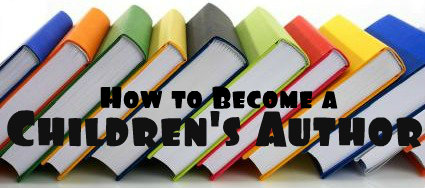If you want to publish a book for children, the first thing you must do is ask yourself why.

Is your motivation to publish a kid’s book one of the following?
- Your kids/grandkids/nieces/nephews/neighbors/students love a story you’ve written.
- It would be fun to see your name in print.
- You want to sign autographs.
- You want to make money, quickly.
- You want your artist cousin/sister/friend to illustrate it.
If you answered “yes” to any of the above, please read this post. I write this to save you a lot of time and frustration. Because it’s not an easy business. NOT. EASY. AT. ALL.
New writers often believe they can pen one story in an hour or two, never revise it, yet somehow land an agent and a publishing deal—-as if the simple act of writing begets publication.
 Hitting one baseball does not mean the Yankees will draft you. Likewise, writing one story does not mean Random House will offer you a contract. Although, keep hitting that ball, make it go higher and farther…learn about fielding and sliding, too…and play seriously for years, and you just might make it.
Hitting one baseball does not mean the Yankees will draft you. Likewise, writing one story does not mean Random House will offer you a contract. Although, keep hitting that ball, make it go higher and farther…learn about fielding and sliding, too…and play seriously for years, and you just might make it.
Everyone believes the first thing they write will be golden and they’ll never receive a single rejection. We are all HOPEFUL. But, everyone is wrong. (Including me!) Trust me, this will NOT happen. It has NOT happened to ANYONE. (Except for Kevin Henkes.)
The motivation to write a children’s book should be:
- You love to write. You were born to write. You can’t NOT write.
- The child inside you is begging to get out and explore.
- You love children’s literature and want to contribute worthy stories to the genre.
- You want to inspire children to read, write, create, imagine and dream.
- You enjoy learning from children. (Yes, your primary goal should not be to teach them. Teachers, parents and guardians teach. Books are meant to be fun.)
- You want to work hard to establish a career as a kidlit author. You’re in it for the long haul.
 Notice fame and fortune have nothing to do with it. That’s something a small percentage of authors achieve. (Yes, authors can have dozens of books in print yet they cannot support themselves through writing alone. Moreover, advance checks can take a long time to arrive, and royalties trail about about 6-9 months behind book sales.)
Notice fame and fortune have nothing to do with it. That’s something a small percentage of authors achieve. (Yes, authors can have dozens of books in print yet they cannot support themselves through writing alone. Moreover, advance checks can take a long time to arrive, and royalties trail about about 6-9 months behind book sales.)
And even if you become a famous author, most people won’t recognize you by sight or name. It will never get you the window table at The Four Seasons on a busy Saturday night. You’re better off making a reservation as “Doctor Lazar”.
It takes most children’s writers years to land their first book deal. And selling one book does not guarantee future book sales. Selling each subsequent book can get MORE difficult, especially if one (or more) of your titles do not sell as well as the publisher expected.
I don’t mean to be discouraging. I want to be REALISTIC. Children’s literature is a BUSINESS. And this business is like any other—it takes hard work, commitment, talent and a little luck, too. If you’re writing a children’s book on a whim, you might end up being very disappointed when you realize how tough it really is.
In short, I’ve made more money and worked fewer hours in EVERY OTHER JOB I’VE EVER HAD.
BUT…
There’s no job I’VE LOVED MORE. (Besides being a mom, of course.)
Just because you’re writing for children doesn’t mean it’s easy. In fact, it is more difficult to become a published kidlit author than it is to become any other kind of author. (That’s because there’s a tremendous amount of competition. Everyone believes writing for kids is easy because they’re kids. Not so.)
So do it because you LOVE it. You LOVE it like you CAN’T LIVE WITHOUT IT. Because children don’t deserve anything less than YOUR VERY BEST WORK.

Steps you should take:
- Earn a degree in English and/or Creative Writing.
- Read hundreds of books in your chosen kidlit genre (picture books, non-fiction, middle grade novels, graphic novels, YA).
- Write. Write. And write some more.
- Join a critique group specific to the genre in which you wish to publish. YA novelists don’t necessarily know a lot about picture books and vice-versa.
- Join SCBWI.
- Attend professional kidlit conferences, book fairs and other literary events.
- Revise. Revise. And revise some more.
- Research agents and editors online.
- Establish a social media presence. Make writing friends. Gain a support system.
- Consider investing in professional writing books, magazines and services like Publisher’s Marketplace (which will show you what books are selling, which agents are selling them, and to whom), The Horn Book, Publisher’s Weekly and The Children’s Writer’s and Illustrator’s Market Guide.
- After at least two years of writing, try submitting. Don’t send your work out in huge batches. Research who likes the kind of work you produce and target a few. If only rejections come back, try another small set of subs, revise again or write something else.
- Never give up. Keep writing new stories. Those who make it in this business are those who persevere!
Excellent online resources for aspiring children’s authors:
- SCBWI
- The Purple Crayon
- Writing for Children and Teens
- Twitter Chats for Writers
- SCBWI (formerly Verla Kay’s) Blueboards
- Myths and Truths of Writing for Children
- Preditors & Editors
- Literary Rambles: Spotlighting Children’s Book Authors, Agents and Publishing
- Author April Pulley Sayre’s How to Become A Children’s Book Author















47 comments
Comments feed for this article
February 26, 2012 at 12:37 pm
jeannie brett
very good post!
February 26, 2012 at 12:39 pm
Mona Pease
“…because I can’t not write!”
Thanks Tara
Mona
February 26, 2012 at 12:57 pm
Donna Martin
You/ve pretty much written the story of my life…I write for children because I love being around them, reading to them, creating with them, and hopefully one day being able to give them something to inspire them. What a great post, Tara, thanks for sharing!
February 26, 2012 at 12:58 pm
Louise Nottingham
I write and play with pictures and colors because… i always have so I probally always will. 😉 But, this year I am really taking it more seriously because I have alot of time on my hands since I am not working outside the home and I have a wonderful husband who wants me to be happy. And if by chance I sell something, great, otherwise hopefully my children will save some of my stuff for the great great children to enjoy!
although having a check or two in my retiring years would sure help feed my crafty habits!!! 😉
February 26, 2012 at 1:00 pm
Marcela S.
Excellent, Tara! Thank you!
February 26, 2012 at 1:01 pm
Wendy Greenley
Thanks, Tara.
Still not discouraged. I guess that’s a good sign! “Mom” doesn’t pay well, either, and that’s the best job I’ve had so far., so I’m well aware that making $$ isn’t necessarily what makes you happy.
Good reminder of all the hard work heading down this road.
February 26, 2012 at 1:07 pm
Tara Lazar
Ha ha, you are so right! “Mom” does not pay well but it is the best job ever. Ooops. I should probably revise this post, then! LOL!
February 26, 2012 at 1:19 pm
Kerry Aradhya
Great post, Tara!
February 26, 2012 at 1:27 pm
elvamax1
Great article, Tara!
February 26, 2012 at 1:29 pm
Lynn Alpert (@RedStepchild)
Great article, Tara! This is so true!
February 26, 2012 at 1:51 pm
bonnieadamson
Well said, Tara.
February 26, 2012 at 1:58 pm
Catherine Johnson
Brilliant post, Tara.
February 26, 2012 at 2:10 pm
Brianna Soloski
Excellent post. I have a few ideas for children’s books floating around in my head, but am not sure about the execution, which is why I haven’t put pen to paper yet. I think there’s a market for the stories I’m thinking about, but it’s hard to get started and I know it’s going to be even harder to get my foot in the door.
February 26, 2012 at 2:26 pm
Ellen L. Ramsey
A splendid post, Tara. You describe both the wonder of writing and the reality of the process of writing and publishing.
February 26, 2012 at 2:48 pm
Janet
What you’ve said is so true. I typed this very long comment, but decided to get off my bandwagon and deleted it. To sum it up briefly, people just don’t understand what it is like to write for children and then try to get it published.
February 26, 2012 at 3:38 pm
Nea Wiseman
76 years, 6 children, 8 grandchildren and 3 greats and I am just getting around to second drafts and endings for stories I’ve written through the years. I appreciate what you have written and will add this. The drive to write and draw is a gift in itself. Without it my life would never have felt complete or so wonderfully alive.
February 26, 2012 at 3:56 pm
Tara Lazar
So true, Nea. You are a wiseWOman!
February 26, 2012 at 3:53 pm
Dienna
Thanks for the reality check. People are probably assuming that since they’re writing for a child that it’d take less effort to write a children’s book as it would one for adults, but writing for any audience involves a lot of work and effort.
February 26, 2012 at 4:08 pm
Hannah Holt
Your first list made me LOL. I was once in a restroom at a writing seminar when I overheard two ladies speaking. The one said to the other, “Oh, I’ll just get an agent. Then I don’t have to worry about all that hard work of finding an editor.” It was so hard not to bust up laughing in my stall. I’ll **just** get an agent, indeed! Maybe submit one or two queries. Then all the hard work is over, right?
February 26, 2012 at 4:46 pm
Michael Sussman
This is a gem, Tara. I’ll refer all beginning writers to your post.
February 26, 2012 at 5:28 pm
cravevsworld
Preach it Tara!
February 26, 2012 at 6:05 pm
jarmvee
Yes, Tara…the desire to inspire children is what keeps me going! Thanks for this…
February 26, 2012 at 9:48 pm
Tracy Bermeo
Excellent piece Tara!
A2ZMommy and What’s In Between
February 26, 2012 at 11:10 pm
kmarie
thank you for the words of wisdom and experience!
February 26, 2012 at 11:40 pm
Christie Wild
Well said! I didn’t know you could read minds. In it for the long haul because of all previous motivational reasons. I’m sure it will still be fun to see your name in print, although this is not the reason we write.
February 27, 2012 at 12:01 am
viviankirkfield
Thank you, Tara, for a great post that encourages us to proceed, while at the same time, warns that it is a difficult journey. If you have to write for children, because it is in your emotional DNA, then at some point in your life, you will!
I’ve had a love affair with children’s picture bboks for over 60 years…and am now finally allowing the ideas, that have been percolating in my soul for many years, to bubble over onto the paper. I’ve never had so much fun in my life…but I’m not going to buy that million-dollar mansion just yet. 🙂 🙂
February 27, 2012 at 7:03 am
Susanna Leonard Hill
Excellently said! 🙂
February 27, 2012 at 9:51 am
Penny Klostermann
This was wonderful & inspiring. Thanks :•)
February 27, 2012 at 12:56 pm
Patricia Tilton
Good post for those who think it’s easy to write for kids and don’t have their heart and soul into writing. You made some really good points.
February 28, 2012 at 12:44 pm
Leslie Gorin
Amen to that! While it may be a frustrating business on one level, I think it’s also a good thing in the long run, acting as a filter to make sure only the best ever does reach kids’ bookshelves. And in the meantime, thanks for the reminder to cherish the process, not just the product.
February 28, 2012 at 1:13 pm
Deborah the Closet Monster
You can’t NOT write.
People often ask me how I can possibly write so much. I say the real question is how long it’d take for me to go nuts if I were forced not to write. Writing is my way to stillness and satisfaction, although it’s in different areas than that covered here. Loved this post!
February 28, 2012 at 8:06 pm
Véronique
Thanks for the reality check but also for the hope that if we have something to share with children that can inspire and encourage them to dream and to create or to help them learn with joy, it is worth it!
February 28, 2012 at 11:31 pm
Kate Mohler
Wow, lotta caps.
February 29, 2012 at 8:16 am
Tara Lazar
You’re very PERCEPTIVE. LOL!
February 29, 2012 at 9:56 pm
Sarah Frances Hardy
Well . . . that’s the best post ever!
sf
March 2, 2012 at 10:43 pm
Lynn A. Davidson
Thanks, Tara. These reminders are helpful.
October 9, 2012 at 11:08 pm
Have a great children’s picture book idea? Avoid common pitfalls « Writing for Kids (While Raising Them)
[…] How to Become a Children’s Author (on this site) […]
October 14, 2012 at 6:18 am
myhappyhero
I just love this post. I was once asked to illustrate a children’s book for someone who said “writing is easy. I had it written in just half an hour”…It was to be a ‘local govt funded project’ and upon reading the text it was OBVIOUS it took her half an hour to write. I felt insulted by her lack of respect for hard work – she was even shocked when I said I wouldn’t be able to do the illustrations in two weeks. Needless to say I politely declined to be involved in this project! Great tips and direction for those of us who are not afraid to put in hard work…..thank you! Cheers Nicky Johnston
June 18, 2013 at 1:04 pm
Michelle Mahovlich
Wonderful and helpful post. I am such a beginner and am not educated in this field, but I have the heart, time and a huge brain bursting with wonderful stories to tell the world. I know that it will take some time, but my ideas and my love of kids and story telling will make it all worth while. Robert Munch was the king of story books in our home as my son was growing up. He is seventeen now and always will remember I love you Forever and how I read the book and sang the words to him every night. I would love to fill those shoes and have that effect on someone one day. Thankn you for your insight and wish me luck! 🙂
June 20, 2013 at 9:22 am
Tara Lazar
Good luck, Michelle. It can be a long road, so just keep traveling along the path…you’ll get there eventually!
September 9, 2013 at 1:36 am
kidbrain
i was raised on books. my kids are being raised on books. every night my kids and i congregate for ‘book party’. my now 7 year old son loves books so much that at the age of 4 he begged me to teach him to read. my 2 year old daughter loves books so much that when she found a ripped book at a doctor’s office she had the receptionist give her tape so she could fix it.they revere librarians. my newborn is just getting started and i’m so excited to introduce her to our favourite picture books. one day i will write books for my small people to love. so thank you for this post.
October 27, 2013 at 1:37 pm
nicole snitselaar
Tara… you are so wise !
you have understood it all ! 🙂
November 11, 2013 at 12:29 pm
Linda
Hope everyone has this one one their desktop, by their computer, in their car…
November 12, 2013 at 3:00 pm
Stella Jane Stauffer
Straight to the heart of things article…and painful. Gotta love this wonderful world of writing and illustrating for children.
June 9, 2015 at 2:50 am
sarahlearichards
Reblogged this on Nobody Doesn't Like Sarah Lea.
June 19, 2017 at 5:28 pm
Susan
Realistic and very helpful. Thanks for the sharing the best reasons for becoming a children’s writer. .
January 30, 2018 at 12:54 am
Gloria
My name is Dee, I really want to write children’s books.I didn’t. realize. It was so hard.I have always liked writing. I love kids so much I have a big imagination.I am ready to give it a try not for the money I just want to give it my best shot.